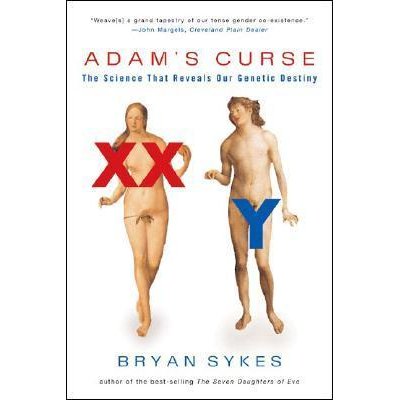A1.2 DNA as the Genetic material for all living organisms
Q) List some key evidence used by Watson and Crick in determining the structure of the molecule DNA?
Visit this website website to study how DNA can be extracted from cells.
Q) List the practical steps required for DNA extraction from any living tissue.
A1.2 Components of a nucleotide
Just as Proteins are made of amino acids, and starches are made from glucose, DNA and RNA are made from building blocks called nucleotides.
A nucleotide consists of :
- a 5 carbon sugar (pentose means 5 Carbon sugar, it is ribose for RNA and deoxysibose for DNA),
- a phosphate group (which gives DNA a negative charge) and
- a nitrogenous base (a base that contains nitrogen).
The elements of a nucleotide are held together by covalent bonds.
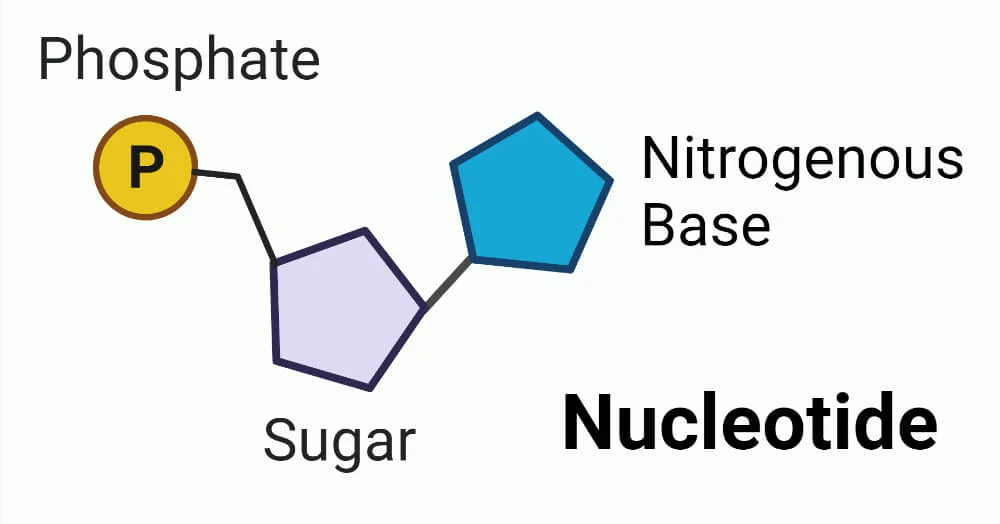
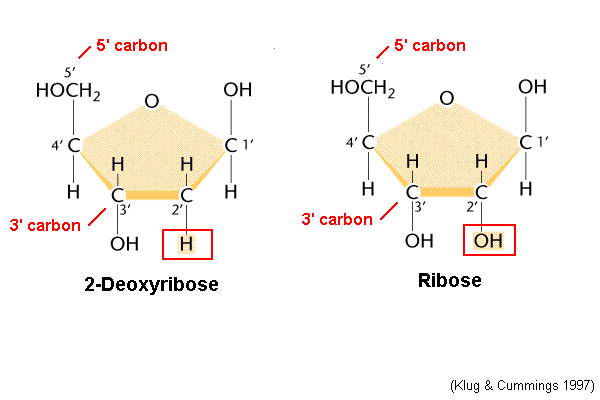
Q) State the difference between ribose and deoxyribose (2-deoxyribose) pentose sugars
Read statement by Marshall Nirenberg, Nobel prize winner for work on Genetic code:
The finding that the code is universal had a terrifi philosophical effect on me. I knew everything about evolution at the time, but the findings were so immediate and so profoud, because I understood that most or all forms of life on this planet use the same genetic instructions and so we are all related. We´re related to all living things and when I came into the garden and saw the plants, squirrels and some of the birds, it had a profound effect on me, which lasts to this day. I think the feeling of being one with nature is very real, and in fact is very true; we all use the same language.
Turn to the person next to you and have a one minute discussion about this statement.
Some viruses including HIV and the Corona (Covid 19 virus) do not use DNA as their genetic component, but RNA instead. However, as viruses cannot reproduce without the aid of other organisms, and have to little to no independent metabolism, it can be argued that they are not truly living organisms.
A1.2.3 Sugar-phosphate bonding and the sugar-phosphate backbone of DNA and RNA
DNA consists of two antiparrallel strands(lined up against each other but running opposite ways), of nucleotides that are joined together by covalent bonds between the ´3 carbon of one nucleotide and the phosphate of another nucleotide.
When building a new strand, free nucleotides can only be added at the 3´carbon end. In this way, DNA strands are said to be built in the ´5 – ´3 direction.
The two strands of DNA are bonded together by weaker hydrogen bonds between the base pairs.
RNA consists of a single strand of nucleotides joined together by covalent bonds.
A1.2.5 RNA as a polymer formed by condensation of nucleotide monomers
Like DNA , RNA is made of nucleotide monomers joined together by covalent bonds.
The covalent bonds are formed between the phosphate of one nucleotide, and the ´3 carbon end of another nucleotide (as in DNA).
This reaction is an example of a condensation reaction, as water is eliminated as the bond is formed (water is made from the OH of belonging to the phosphate group combining with the H from the OH of the ´3 carbon in the sugar.
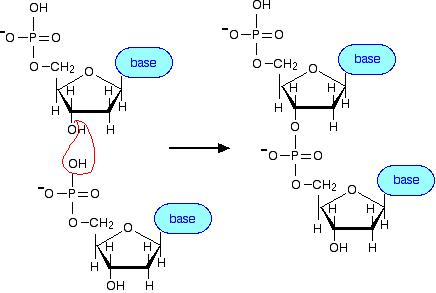
A1.2.6 DNA as a double helix made of two antiparallel strands of nucleotides with the two strands linked by hydrogen bonding between complementary base pairs.
When the two strands of DNA line up and form hydrogen bonds between base pairs, the same base pairs always combine. These are called complimentary base pairs.
Adenine (A ) forms two hydrogen bonds with Thymine (T)
Guanine (G) forms three hydrogen bonds with Cytosine (C).
Q) Draw a molecule of DNA where the bases on one strand run as follows GCGAT
Q A sample of DNA is extracted and found to contain 38% Guanine. What is the quantity of the other three bases?
A1.2.7 Differences between RNA and DNA
The single stranded RNA contains Guanine (G), Cytosine (C) and Adenine (A), but not Thymine (T). Instead another base Uracil (U) is involved.
Q) Synthesising what you know, list two similaries and three key differences between RNA and DNA.
A1.2.8 Role of complementary base pairing in allowing genetic information to be replicated and expressed
Because of the base-pair rules, DNA sequences can be copied by using the single strands as templates, to build new complimentary strands. This feature makes it easy to copy base sequences.
When a new copy of DNA is produced, both strands are copied (DNA replication).
When a protein is made from DNA, only one strand is copied to make a copy of a gene (transcription). This copy is called mRNA and it travels to the ribosome to build a protein.
We call this last step translation, because the sequence of DNA bases has been translated into a sequence of amino acids in a protein.
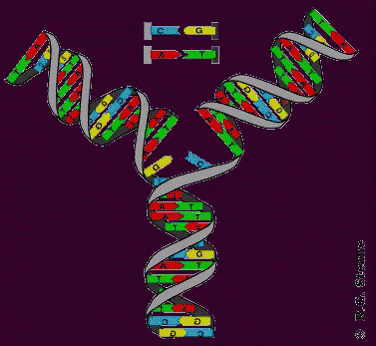
A1.2.9 Diversity of possible DNA base sequences and limitless capacity of DNA for storing information
The math tells us that if a there is one single base, there are four possibilities in DNA for that base.
If there are n number of bases, then there are 4 to the power of n possibilities.
Q) For a base sequence of just 10 bases, what would be the number of possibilities?
A1.2.10 Conservation of the genetic code across all life forms as evidence of universal common ancestry
Nearly all forms of discovered life use the same genetic code based on DNA.
The code is based on a sequence of three nitrogenous bases. That means that three bases code for a specific amino acid (or building block for proteins). This sequence of three is called a codon.
AUG – always stands for start
